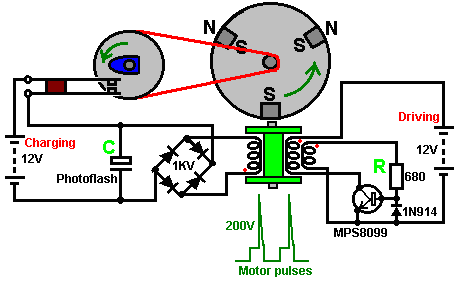

During discharge the negative electrode of the cell is the anode.

See also cationĪnisotropic - Showing differences of property or of effect in different directions.Īnode - The electrode in an electrochemical cell where oxidation takes place, releasing electrons.
#BATTERY PULSE CONDITIONING SERIES#
It is the battery's Amphour capacity multiplied by the battery voltage.Īmpoule battery - A battery in which the electrolyte is stored in a separate chamber from the cell electrodes until the battery is needed.Īnalogue (Analog) circuit - An electronic circuit in which an electrical value (usually voltage or current, but sometimes frequency, phase) represents something in the physical world.The magnitude of the electrical value varies with with the intensity of an external physical quantity.Īlso - An electrical circuit which provides a continuous quantitative output ( as opposed to a digital output which may be a series of pulses or numbers) in response to its input.Īnechoic chamber - A room whose walls do not reflect either electromagnetic or acoustic waves.Īnion - Particles in the electrolyte of a galvanic cell carrying a negative charge and moving toward the anode during operation of the cell. The true capacity of any battery is its energy content and this is measured in WattHours (Wh). Strictly - One Ampere hour is the charge transferred by one amp flowing for one hour. For automotive (Lead Acid) batteries the SAE defines the Amphour capacity as 20 times the current delivered for a period of 20 hours when the battery is discharged at 1 twentieth of the C rate until the cell voltage drops to 1.75 Volts. For most batteries it defines the battery's C rate. See also isotope.Īmbient temperature - The average temperature surrounding the battery, typically air.Īmorphous - Without definite shape or structure, without crystalline structure.Īmpere (Amp) - The unit of current flow equal to one coulomb per second.Īmpere hours (Ah) or Amphours - The unit of measure used for comparing the capacity or energy content of a batteries with the same output voltage.

The more general term, used for any crystalline material, is polymorphism. The term allotropy applies to elements only, not compounds. Alkaline solutions are strongly basic and neutralise acids forming a salt and water.Īlkaline battery - A battery which uses an aqueous alkaline solution for its electrolyte.Īllotrope - Two or more forms of the same element in the same physical state (solid, liquid, or gas) that differ from each other in their physical, and sometimes chemical properties. An acidic solution has a pH less than 7.0Īctive material - The chemically reactive materials in an energy cell which react with each other converting from one chemical composition to another while generating electrical energy or accepting electric current from an external circuit.Īgeing - Permanent loss of capacity with frequent use or the passage of time due to unwanted irreversible chemical reactions in the cell.ĪGM (Absorbtive Glass Mat) battery - A lead acid battery using a glass mat to promote recombination of the gases produced by the charging process.Īlkali - A compound which dissolves in water producing negatively charged hydroxide ions. A compound containing hydrogen which dissociates in aqueous solution producing positively charged hydrogen ions (H +). A device which converts continuously varying analogue signals into a binary coded digital form.Īcid - A proton donor. The primary elements of the inverter are the DC/AC converter, a regulation system and an output filter.Ī/D Converter (ADC) Analogue/Digital Converter. More details are available by following the linksĪC Inverter - An electrical circuit which generates a sine-wave output (regulated and without breaks) using the DC current supplied by the rectifier-charger or the battery. Note - You can also use the Search Engine to quickly find what you are looking for. Woodbank does not monitor or record these emailsĮlectropaedia Battery Technology Glossary


 0 kommentar(er)
0 kommentar(er)
